After waiting a year to play music in public, the sounds of the mariachi are once again filling Tucson’s St. Augustine Cathedral. Many parishioners say the mariachis are more than musicians you tip in a cantina, but they bring a spiritual aspect to Sunday services. The Associated Press has the story:
The interplay between instruments is a natural complement to Sunday mass
TUCSON, Ariz. (AP) — A blast of festive trumpet flourishes and guitarrón bass breaks the solemn hush of Mass on a torrid August desert morning. Decked out in gold-embroidered suits, nine musicians pick, strum, and trumpet the entrance hymn under tall stained-glass windows.
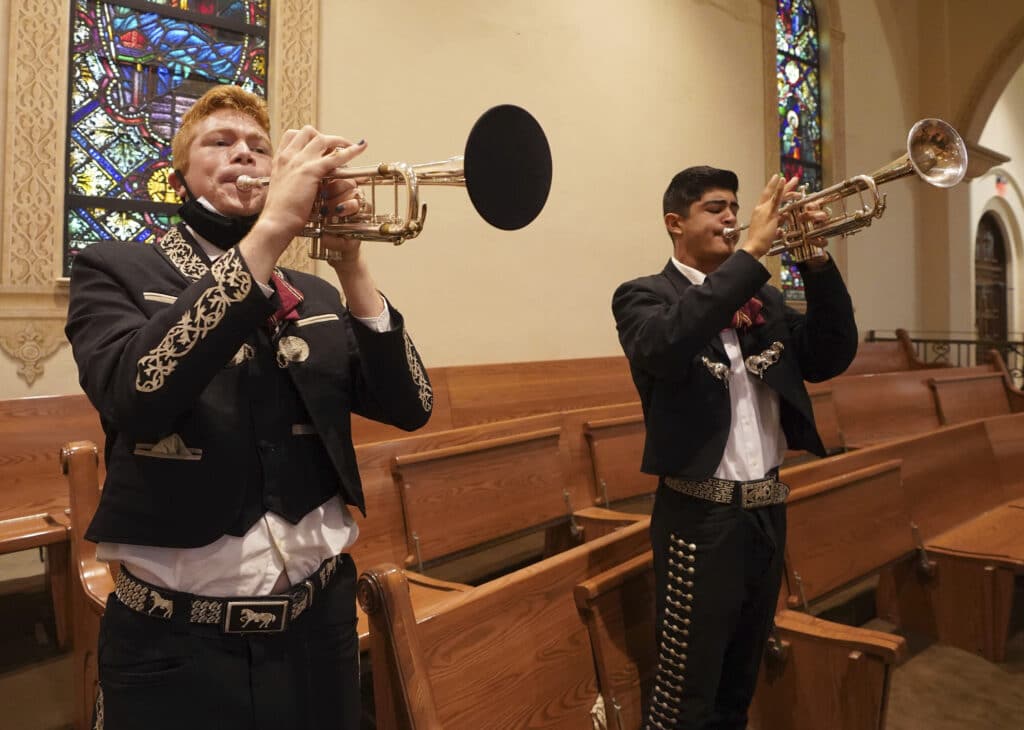
After more than a year of silence due to the pandemic, mariachis are back playing Sunday services at Tucson’s St. Augustine Cathedral, where the colorful and sonorous tradition dates back a half-century and fuses Roman Catholicism with Mexican American pride.
For the hundreds of worshippers gathered in this Spanish colonial church, and other congregations across the Southwest, the unique sound of mariachi liturgy is more than just another version of choir. It evokes a borderlands identity where spirituality and folk music have blended for centuries.
“Syncretism is the reality of this land, the ‘ambos’ reality,” said the Rev. Alan Valencia, the cathedral’s rector, who grew up attending mariachi Mass in “ambos Nogales,” or “both Nogales,” as locals refer to the two cities of the same name straddling the U.S.-Mexican border about 60 miles (100 kilometers) to the south.
“And that’s what we see in these mariachi Masses,” he added. “Faith and culture come together and grow.”
Mariachi forms the soundtrack to daily life here in the borderlands, accompanying everything from backyard barbecues and quinceañera coming-of-age parties to weddings and funerals.
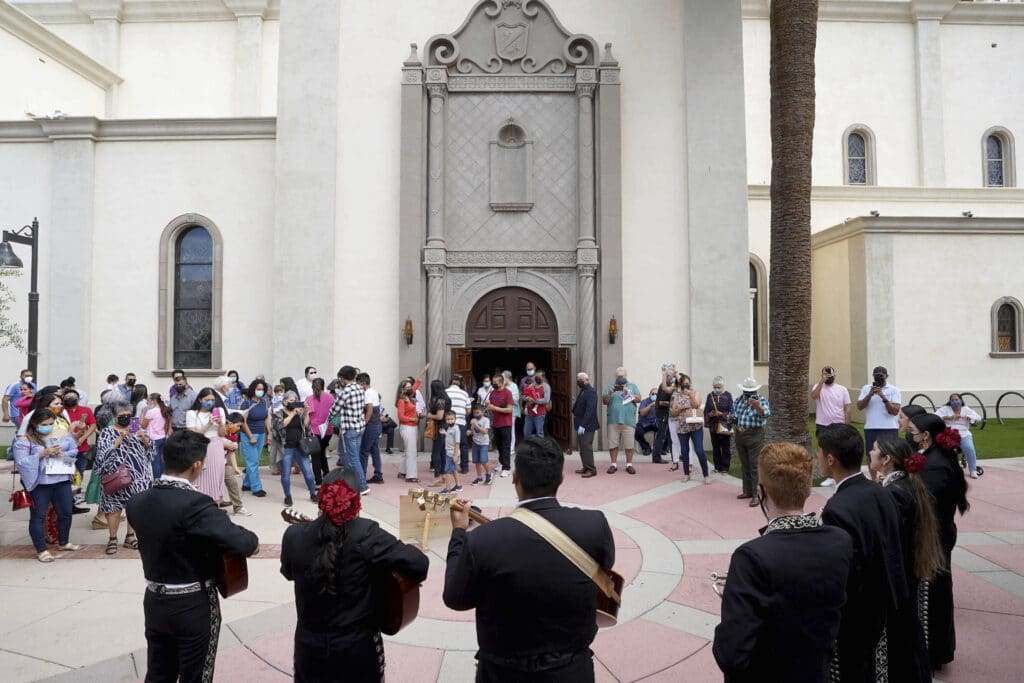
Yet while mariachi is a popular genre at its core, musicians and parishioners alike say its emotional interplay between trumpet, violin, guitar, vihuela and guitarrón is a natural complement to the holy rites of Mass.
“The Mass itself is a reminder that you don’t just have mariachis you tip at tableside in a cantina,” said Alberto Ranjel, who has been playing at the cathedral since he was 9 and now leads the ensemble his father founded, Mariachi Tapatio. “It is a representation of my culture.”
Worshipper Leilani Gomez echoed that sentiment, saying, “They bring to Mass culture and art, together with the presence of God. They make you feel the presence of God.”
The first canon of mariachi Mass was composed in Cuernavaca, Mexico, after the Vatican encouraged the incorporation of regional musical traditions into services in the 1960s. Called the Misa Panamericana, or Pan-American Mass, it features a specific order of instrumental arrangements, sung prayers and hymns, according to Dan Sheehy, director and curator of the Smithsonian Folkways Recordings.
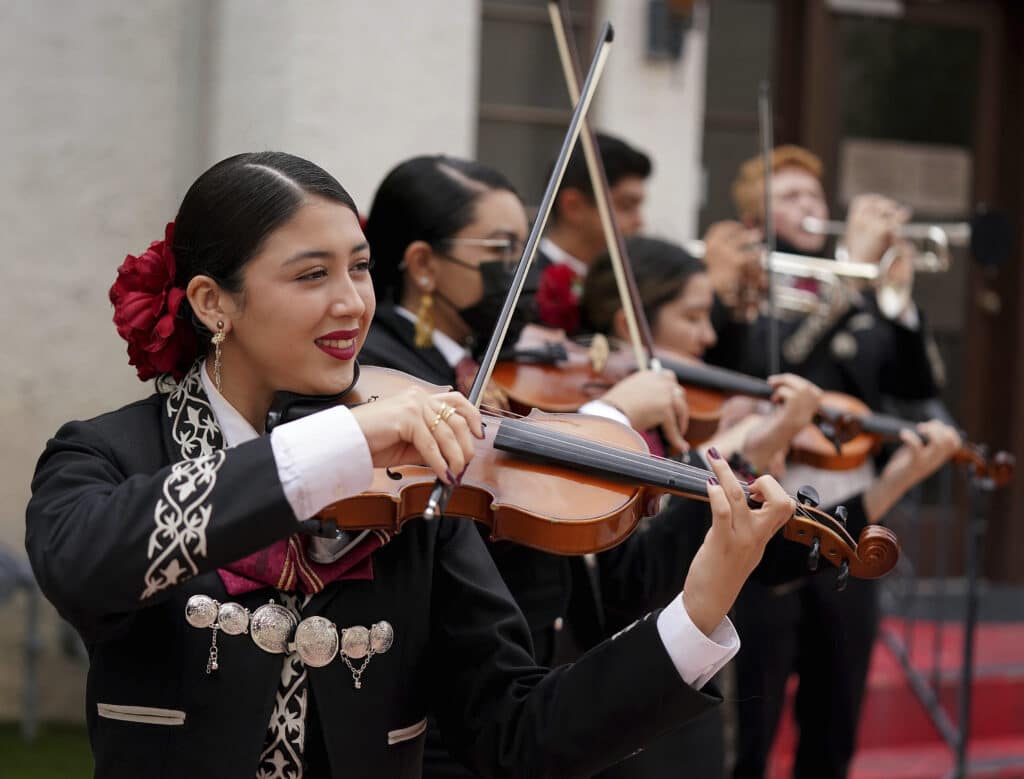
At that time in the United States, the Chicano civil rights movement was blossoming, and mariachi musicians morphed from folksy troubadours to cultural heroes, “symbols of Mexican identity heightened here because of multiculturalism,” Sheehy added.
Hundreds of mariachi school programs followed in the 1970s, when the music began to be written down instead of taught by lyrical training, said George Bejarano, who in 1973 started playing with the youth group Los Changuitos Feos, or “the ugly little monkeys,” and whose family has been in the borderlands “since before there were borders.” Also, female musicians began joining the traditionally male ensembles.
Mainstays of mariachi Mass include the joyful “Pescador de Hombres,” or “fisher of men” — the Spanish-speaking faithful’s equivalent to “Amazing Grace” for its popularity and ubiquity — and a thrilling rendition of Franz Schubert’s 19th-century classic, “Ave Maria.”
During performances of the latter at the cathedral, Ranjel turns to face a painting of the Virgin of Guadalupe, patroness of Mexico and the Americas, and intones the Latin version of the lyrics.
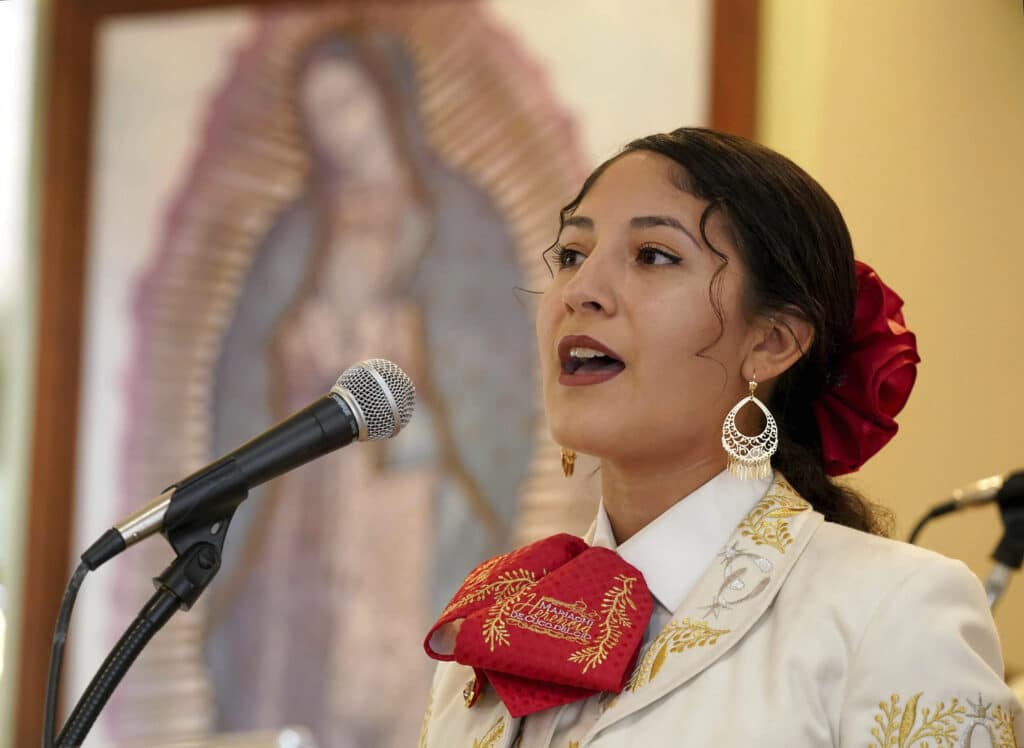
“The prayer aspect of it is what I’m respecting by singing it in Latin,” he said.
Four ensembles take turns performing the 8 a.m. Spanish-language Mass at the cathedral in central Tucson, one Sunday apiece per month. All volunteers, they typically spend at least two hours a week in rehearsal and on Mass day rise before dawn to prepare their trajes de charro, elaborately festooned suits that originated in Mexico and are commonly worn by mariachi groups.
For musicians like Daniel Rodriguez, the leader of Mariachi Herencia de Cuco Del Cid, a 20-year fixture at the cathedral and also Most Holy Trinity Church in the city’s northwest, performing is a way to give back to the community.
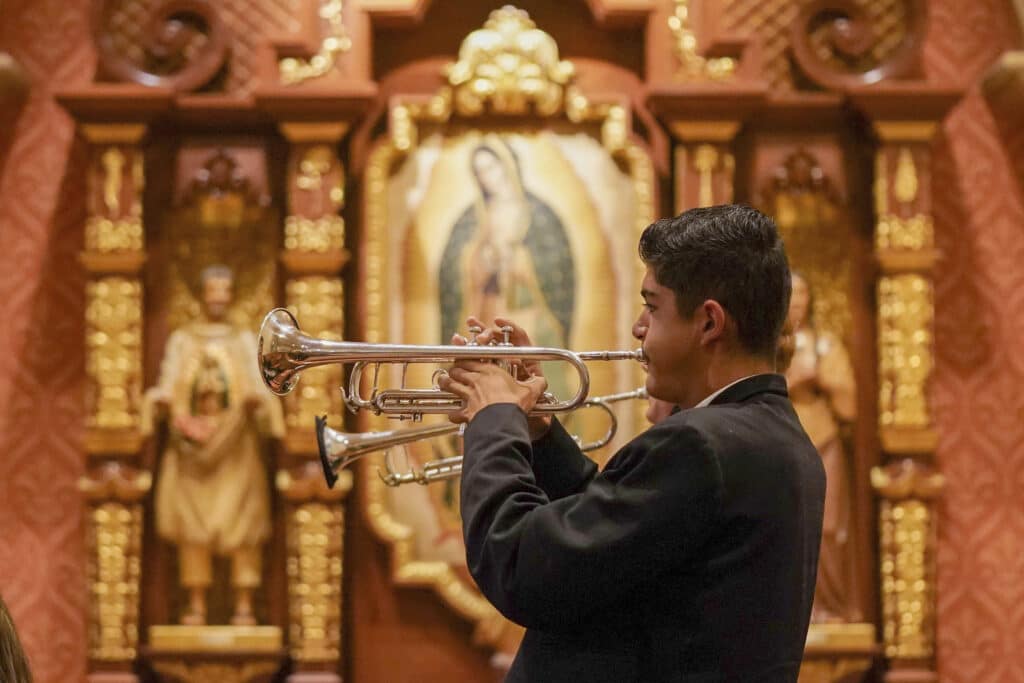
“When you sing or there’s music offered up to God, it’s like praying but it’s more powerful,” Rodriguez said. “For us to be a driving force through our music, to inspire people to come back and stay at Mass, that’s really powerful.”
On Sept. 18 Los Changuitos will feature at a special Mass honoring victims of the coronavirus pandemic, which has killed nearly 2,500 people in Tucson’s Pima County and silenced the mariachi services from spring 2020 until they resumed late last month.
On a recent Sunday, the show kept going even after Mass was over, with musicians serenading worshippers on the palm-lined patio outside the cathedral. Wearing face masks against the resurgent virus, people held up smartphones to record the sights and sounds of a shared heritage they had sorely missed.
“They bring unity to the church. It’s more spiritual,” said Diana Pacheco, who has attended mariachi Mass since childhood. “Without them, it was very empty-feeling for us here.”
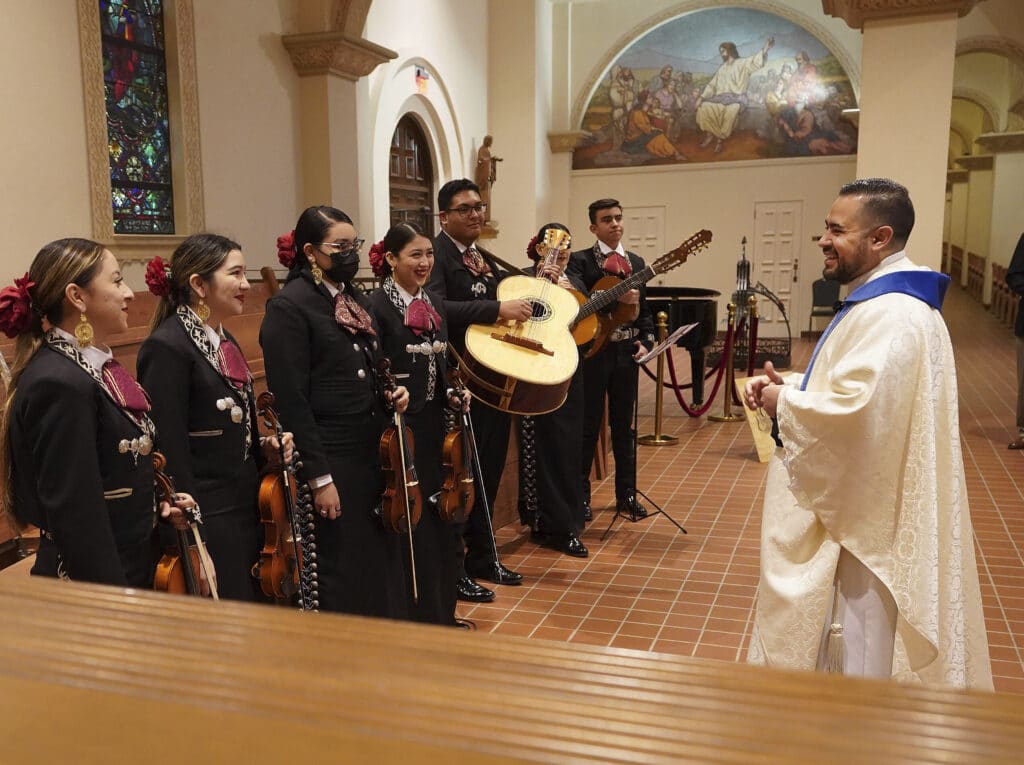
Victor Soltero, who has been worshipping at the cathedral for some 50 years, also rejoiced at their return.
“It makes you happy,” Soltero said, “and what better way to come over and honor the good Lord than having some beautiful music that picks you up.”
Byline: By GIOVANNA DELL’ORTO






